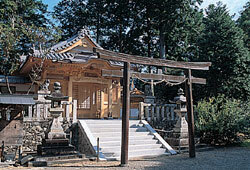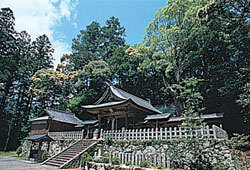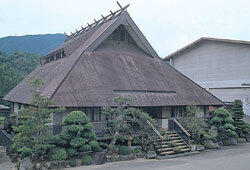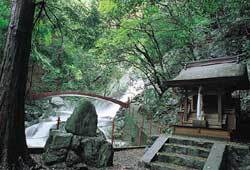Shrine,Historical Facility
Kido Shrine

The Kido shrine where Kidonari is enshrined is located behind the Miyose Bridge on a mountain path. The shrine is admired by the local people and to celebrate the shrine, a festival is still held.
Kidonari was a kokushi in Kii, present day Wakayama. He visited this area to search for materials to be used for temple construction. While searching along the Hidaka River, he found timber but eventually, he lost his life in an accident on that river. The temple he tried to construct is Dojoji and Kido Shrine share the same Chinese characters. Every year the brave Kido Matsuri is held on Sunday just before the Health and Sports Day in October.
Choshi Hachiman Shrine

According to Kiifudoki, it is called choshi Hachiman Shrine because there was a small shrine in choshi in Kokamoto Village in the past. This shrine has been regarded by local people as a tutelary deity in 9 area such as Tajiri, Takatsuo, Kokamoto, Miza, Oiboshi, Omata, Sai , Sakanogawa, and Nishihara. A Buddhist image is enshrined in the shrine. This is an ancient style so you can just imagine how old the shrine must be
Kyodo Bunka Densyukan

The Nakatsu Bunka Densyukan, Local Cultural Preservation Facility was opened in June, 1982. It exhibits the precious cultural assets in the Nakatsu area that we want to hand down to posterity. It is two story, steel frame building. In this reconstructed, traditional house, there are exhibits on the stone implements and earthenwares in the old Stone Age and the Jomon period and the farming tools and other articles which show the climates and traditions in the Nakatsu area
Washinogawa Knnonzo

There is “Kannonzo”, a temple which has Buddha statues, near the water fall in Washinogawa river which enchants in every season. The origin is unknown, but you can imagine that the “Kannnonzo” along with the magnificent falls have satisfied the faith of visitors. There is a monument on which a poem composed by “Kano Syohei”, a poet in the last Edo period, is engraved.